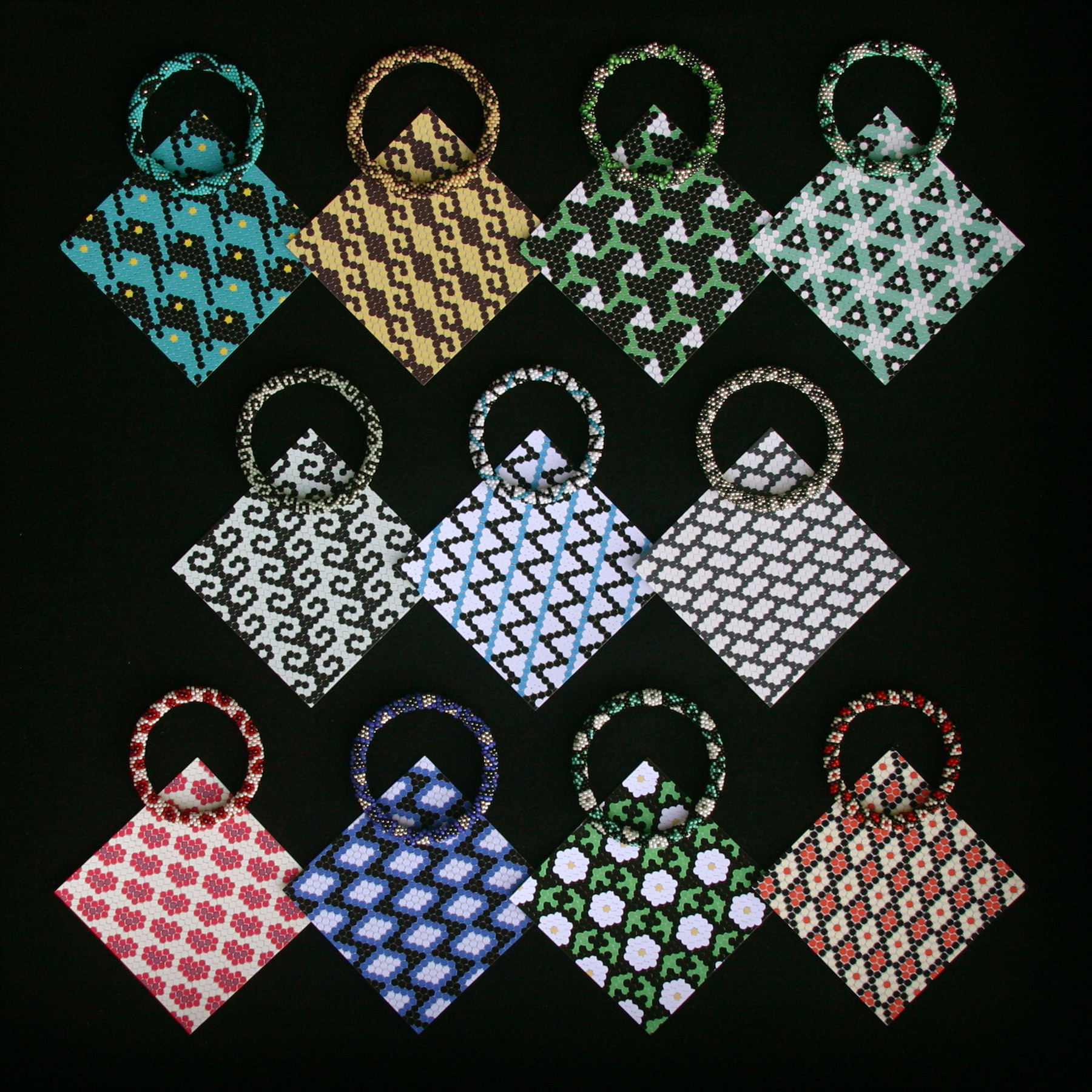Crystallographic Bracelet Series
Ellie Baker and Susan Goldstine
Glass, sterling, and semi-precious stone beads, thread, inkjet prints on paper
2011
Joint Mathematics Meetings Exhibition of Mathematical Art, Boston, January 2012

Bead crochet bracelets have an allure that is hard to resist. For the wearer, adorned by the firm but pliable packing of beads into a sleek, snake-like skin, the appeal is both visual and tactile. For the crafter, the technique is meditatively repetitive and the bead color and texture choices endless. But for the mathematically minded, the greatest allure is in creating bracelet patterns. Behind the deceptively simple and uniform arrangement of beads is a subtle geometry that produces compelling design challenges and fascinating mathematical structures.
Successful bead crochet bracelet patterns are best considered as infinite plane tilings, with the tiles composed of contiguous beads that obey certain placement rules dictated by the circumference of the beaded rope and the structure of the crochet. Since each of these planar bead tilings has a finite fundamental region, it is natural to ask which of the seventeen plane crystallographic groups arise from bead crochet bracelet designs. We have shown that bead crochet precludes all patterns with order four rotations (p4, p4g, p4m), as well as the group p31m, and that it limits two other groups (p6m and p3m1) to patterns with fundamental regions smaller than a single bead. This piece proves by example that the remaining eleven groups (p1, p2, p3, p6, pg, pgg, pmg, pm, cmm, cm, pmm) are all realizable in bead crochet.
To see more about the underlying mathematics and the art of bead crochet, look at Chapter 6 of Crafting Conundrums: Puzzles and Patterns for the Bead Crochet Artist by Ellie Baker and Susan Goldstine.